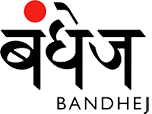
HANDCRAFTED, Sustainable Fashion
Currency

HIMALAYAN BLUE
Nestled in the Kumaon region of the Indian Himalayan state of Uttarakhand, Avani is a community built on the principles of sustainability and local empowerment. It was started in 1999, by Rashmi Bharti and Rajnish Jain, with the vision of generating an income for the local people, using only local skills and local environment friendly materials. For generations the women of the Kumaon region have been involved in handspinning and weaving of natural fibres like wool, pashmina and hemp. Traditionally, they use drop spindles for spinning yarn and pit looms or back-strap looms for weaving. Natural materials were used for dyeing, and their colour palette was limited to shades of brown, yellow and pink.
 |
 |
The Avani team were determined to build new markets for their textiles to increase the income of poor families while preserving their traditional craft of handspinning and weaving. They decided to expand their colour palate using only natural ingredients sourced from their surroundings, which would become an additional source of income for the local communities. They have identified more than 50 plant species that can be used to create colours. These eco-friendly, plant-based colourants can be used in textiles, cosmetics, wood strainers, art materials and pharmaceuticals. In the last 18 years they have planted more than 1500 trees that yield colour for dyeing, thereby helping in restoring the ecosystem and the biodiversity of the region.
 |
 |
 |
In 2011, they decided to cultivate the indigo plants in the wastelands. The project emerged organically through their work with the cultivation and collection of other locally grown plants used for dyeing. They realised that consumption patterns were changing and with a significant customer preference for non-toxic products, the global demand for natural dyes was increasing. The project involved working with the farmers and creating a market for the produce. For Rashmi, it became a passion to learn about the cultivation of indigo as well as the extraction of the pigment. The process began with trials for growing indigofera tinctoria on the Avani campus. Over three years they successfully grew the plant and multiplied the seeds, which were then distributed to farmers in the surrounding region. They explored and developed a model to suit the mountainous terrain, soil, water and climatic conditions of the region. They now cultivate three varieties of indigo, Indigofera tinctoria, Strobilanthes cusia and Polygonum tinctorium depending on the altitude, with each offering a different shade of blue. They have decentralised the extraction plants to suit the topography of the region. Small units are set up near the areas of cultivation to cut down on the transportation of the leaves, which are required in vast quantities. |
About 200 farmers in Pithoragarh and Bageshwar districts in Uttarakhand have taken up indigo farming. The cultivation of indigo has helped in regenerating the wastelands, enriching the soil as the plant has nitrogen fixing properties, and curbing soil erosion, while creating employment for the local community. As Rashmi says, ‘We have established that indigo can be a crop of regeneration and healing rather than its previous dark history of exploitation. We are rewriting the story of indigo with the lens of empowerment, especially of women farmers, of caring and restoration. A farmer can annually earn around Rs.50,000 from one acre of land.’
Many regions in India are reverting to the use of natural dyes as they have realised the harm caused by chemical colouring. Traditionally, almost every region in the country had their own specialised indigo fabrics; such as the dhabu prints of Akola, Barmer and Sanganer, the ajrakhs of Kutch, the ikats and kalamkari prints of Andhra, and the neelambari sarees of Benaras. There is a new resurgence and many fashion designers and retailers are using natural dyed fabrics, with indigo being one of the most popular colours.










